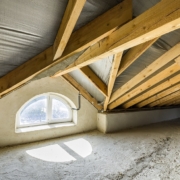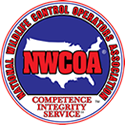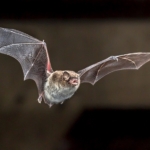Can An Animal In Attic Get Into The House?
Wild animals don’t make the best guests and can soon become unwanted tenants in our homes. Mainly because they cause damage when entering and occupying our homes. But these critters also might infect us with various diseases and parasites.
Wildlife likes to hide in the attic because the place is dark, warm, and usually unoccupied. Animals typically break in and enter the attic in the spring during the mating season, when they need a cozy place to nest and raise their young. Also in the fall, when they need to seek shelter from the approaching cold winter weather.
Therefore, having wild animals in the attic is common. But you usually don’t even notice they are there until you start hearing noises, seeing droppings, or your AC stops working.
Keep reading to learn which animals can be potential intruders, how they get into your house, and what to do about it.
How To Tell What Kind Of Animal Is In My Attic And Home
It’s usually possible to identify wildlife based on the size and condition of the holes they use to access your house, as well as other evidence such as noises and droppings.
Bats
Bats can get into the attic frequently, especially over the summer.
When dealing with these animals, you need to pay attention to the appearance of the hole instead of its size. As they have oily fur, they will leave grease stains around the entry points and walls.
Also, you could have bats if you hear fluttering and chirping in your attic.
Rats and mice
A rat or mouse can enter the attic or living space through a hole smaller than an inch.
They will leave small droppings near their nests and can damage your insulation. You know if there are rodents if you smell their urine throughout your attic and in the house.
You will also hear scampering or squeaking noises at night, especially if the sounds are going up and down the walls, then it’s likely mice or rats.
Raccoons
Raccoons are known for sneaking around attics and chimneys, and will get into your home through holes in your roof or sidings. A gap as small as a deck of cards is big enough even for a large raccoon.
Raccoons are nocturnal so you’re likely to hear their noises at night as they snack on your trash.
You may also want to look for damaged wires or ducts, as well as footprints and droppings.
Opossums
Opossums are also nocturnal creatures. They are attracted to your home as they search for food and warm shelter. Typically, they can be hiding in your attic and crawlspaces.
If opossums are on your property, you’d hear noises at night and see overturned trash cans in your yard.
Squirrels
Squirrels can access your attic through the roof or in the shingles over the fascia boards. They can climb and jump to incredible heights.
When there are squirrels in your house, you’ll hear scampering noises during the day. You’ll also see chewed wires, piles of nuts, and droppings. Your attic insulation might be damaged or missing.
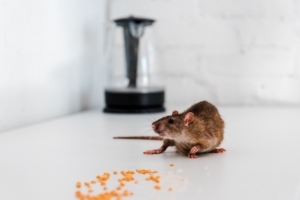
Ways Animals In The Attic Get Into The House
When wildlife invades your home, it takes refuge in sheltered spaces and makes a nest in the attic. Wild animals in attics can get into your house in many different ways.
Some species can habitually claw or chew through the drywall from inside of the attic and create a hole that gives them easy access from the attic into the house.
Critters like rats, mice, and squirrels are chewing rodents, and they are likely to cause a lot of damage in your house in a very short time as they chew through ceilings and walls.
On the other hand, larger animals like raccoons or opossums might fall through the ceiling or drywall if it collapses as it’s damaged or in poor condition.
Both mice and rats are also proficient climbers. Therefore, once inside, they will climb vertical walls and move between walls, ceilings, crawlspaces, or drain pipes. These rodents might travel up the walls between the studs throughout the house and back into the attic.
Lastly, if you suspect a wild animal has entered your house, inspect your interior and exterior property for signs of animal activity such as chewed holes, droppings, oily stains, or visible damage. Also, check air vents, cables, and electrical systems for chew marks.
Contact wildlife removal professionals to help you deal with the animals in your home through exclusion techniques. They can give you peace of mind by inspecting your property, finding possible entry points and sealing them accordingly.
Once your home is secure, it is important to restore it. The Pest Control Authority Wildlife team in North Carolina offers services to repair damage caused by the animal, clean up the affected areas, and replace or install new insulation to ensure your home is safe and energy-efficient again. Our wildlife removal experts can help you reclaim your home after a wild animal infestation. So call us today!
